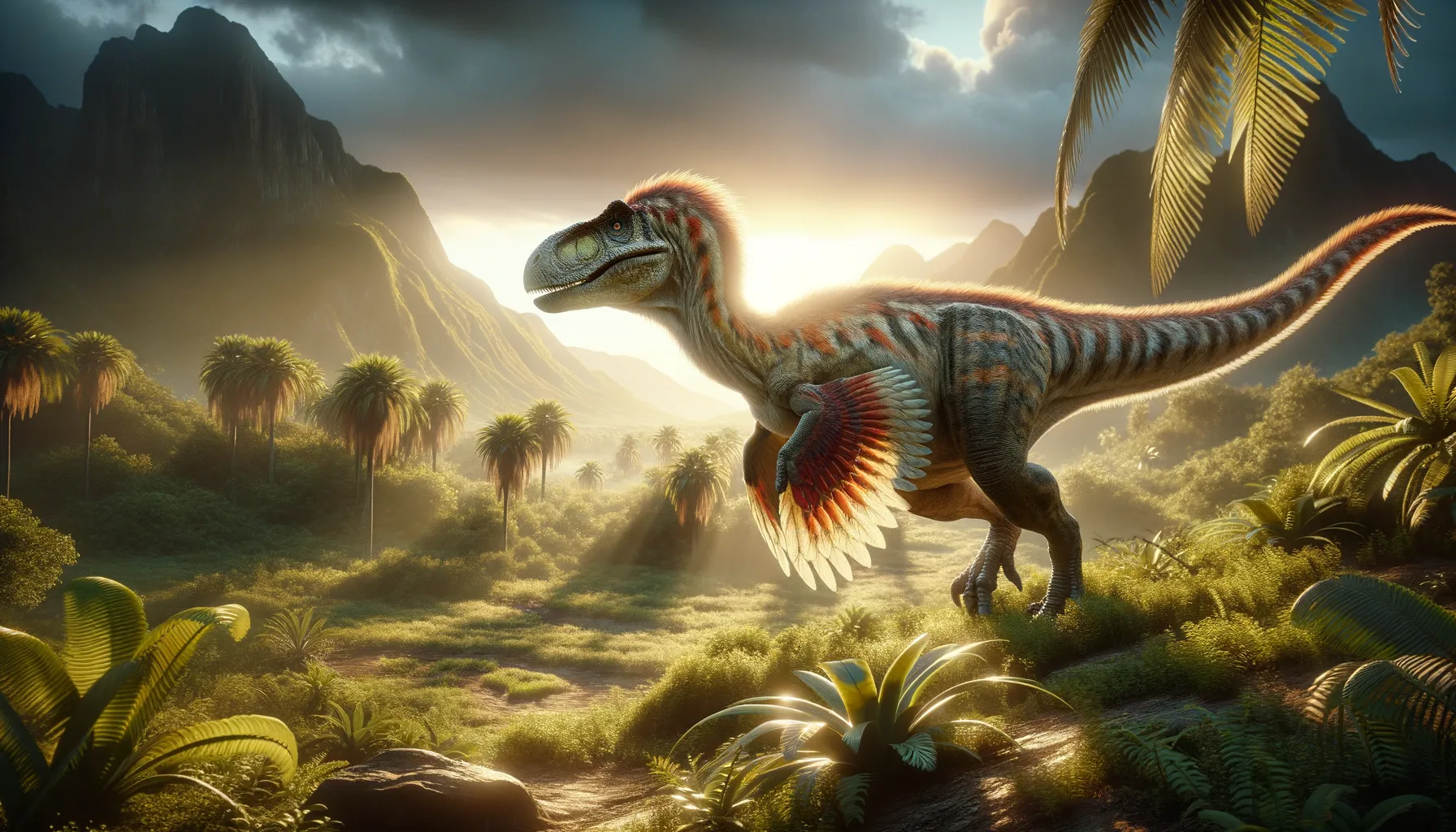
Xingtianosaurus
Feathered Evolution Unveiled
Period
Cretaceous
Length
About 3 meters long from head to tail.
Height
Roughly 1.5 meters tall at the hips.
Weight
Approximately 70 kilograms.
Xingtianosaurus was a remarkable dinosaur that lived during the Cretaceous period. It is known for its distinctive feathers and wings, indicating an evolutionary link to birds. Discovered in China, its fossils provide crucial insights into the anatomy and lifestyle of feathered dinosaurs. Primarily herbivorous, Xingtianosaurus is a fascinating example of the diversity among early feathered creatures, revealing the rich tapestry of life in prehistoric times.
Diet
Xingtianosaurus primarily fed on plants, utilizing its curved beak to strip leaves and stems. Its dietary habits reflect its adaptation to a herbivorous lifestyle typical of many small to medium-sized dinosaurs.
Hunting
Though not a predator, Xingtianosaurus may have foraged for food in groups. Its keen eyesight and ability to move through dense foliage aided in locating food.
Environmental challenges
During its time, Xingtianosaurus faced various challenges, including predators and climate shifts. These changes required it to adapt to fluctuating temperatures and possibly competing for resources. Additionally, habitat changes due to volcanic activity and shifting plant life added stressors to its environment.
Speed
Moderate, suitable for foraging.
Lifespan
Average lifespan of around 20 years.
First discovery
Unearthed in northeastern China in 2019.
Fun Facts
- Xingtianosaurus was a feathered dinosaur that lived around 125 million years ago during the Early Cretaceous period.
- Its name is inspired by Xingtian, a headless deity from Chinese mythology, due to its unusual fossil features.
- Xingtianosaurus was found in the Jehol Biota in what is now northeastern China, a site famous for its well-preserved fossils.
- It was a small, bipedal dinosaur, estimated to be around 1.6 meters (about 5 feet) long.
- This dinosaur had long arms with three-fingered hands, likely adapted for grasping or holding objects.
- Xingtianosaurus is classified as a theropod, a group that includes both carnivorous dinosaurs and their descendants, birds.
- It had a toothless beak, which suggests it might have had a highly specialized diet, possibly including plants or small animals.
Growth and Development
Xingtianosaurus likely experienced rapid growth during its early years to reach optimal size quickly. The growth rings in bones suggest periods of fast growth followed by slower phases, perhaps linked to seasonal food availability. Juveniles would stay close to adults for protection and learning survival skills.
Habitat
Dwelling in forested environments in what is now China, Xingtianosaurus thrived in diverse ecosystems. These habitats provided ample foliage for feeding, shelter, and nesting sites. The presence of rivers and streams supported its need for water and may have influenced its migratory patterns.
Interaction with other species
Xingtianosaurus coexisted with various other dinosaurs and prehistoric animals. It likely avoided large predators through its agile movements and protective grouping. In its habitat, it played a role in the ecosystem by aiding in plant dispersion through feeding habits.
Natural lifespan
Xingtianosaurus had a natural lifespan of around 20 years.
Reproduction
Reproductive behavior likely involved laying eggs in nests built on the ground or low vegetation. Parent Xingtianosaurus may have guarded these nests from predators. Hatchlings were precocial, meaning they were relatively mature and mobile shortly after hatching.
Social behaviour
Xingtianosaurus may have lived in small groups to enhance foraging efficiency and provide defense against predators. Social interactions could include communication through visual displays made possible by its feathered appendages. Group living would also aid in the rearing of young.
Fossil locations
Fossils of Xingtianosaurus have mainly been found in the Liaoning Province of China. These findings have been crucial in understanding the dinosaur's anatomy and its place in the evolution of feathered dinosaurs. The well-preserved nature of these fossils offers detailed insights into its life and environment.
